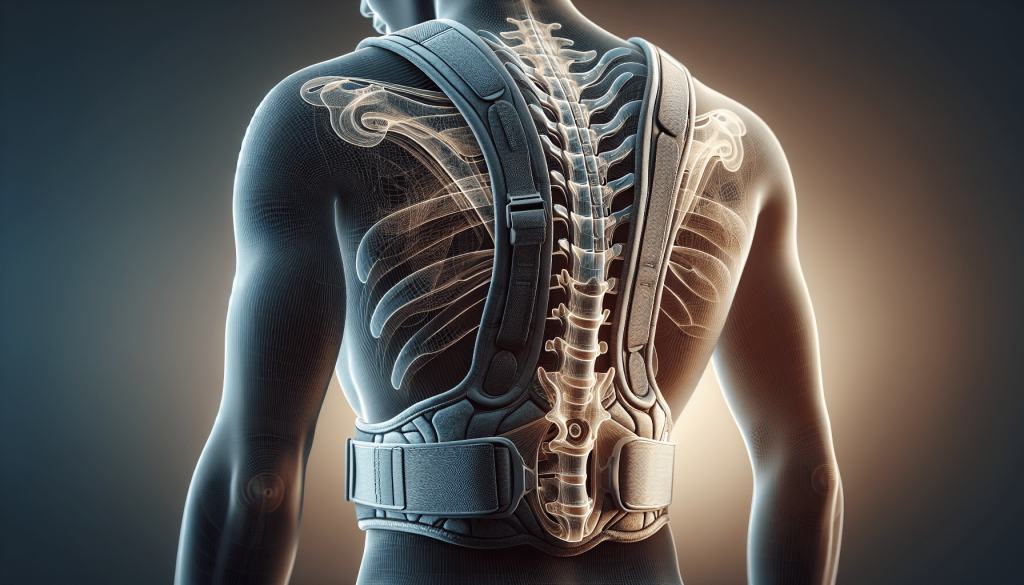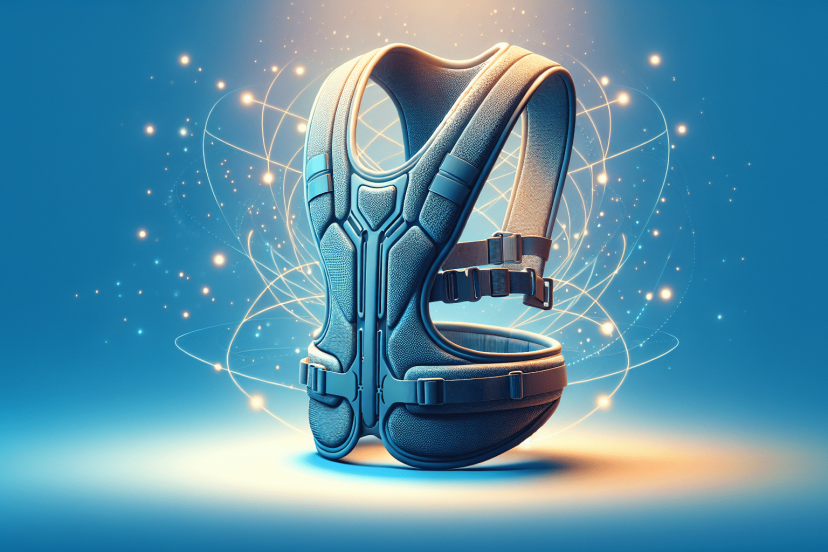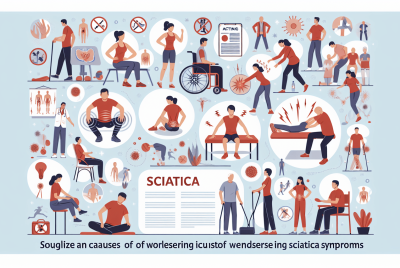Are Back Supports Good For Back Pain?
Are you one of the millions of people who suffer from back pain? If so, you’re probably constantly on the lookout for ways to alleviate the discomfort. Back supports, also known as back braces or lumbar supports, have been touted as a potential solution. But do they really work? In this article, we will explore the effectiveness of back supports in managing back pain and discuss whether they are a worthy investment for those seeking relief. So, if you’re intrigued by the idea of finding some relief for your aching back, read on to discover the truth about back supports.

The Use of Back Supports
Back pain is a common issue that affects millions of people worldwide. It can range from mild discomfort to debilitating pain, making it difficult to perform everyday tasks. In order to manage and alleviate back pain, many individuals turn to back supports as a solution. Back supports, also known as back braces or orthotics, are devices that are designed to provide support to the spine, promoting proper posture and reducing strain on the back muscles. They can be worn either around the lower back or the entire torso, depending on the specific needs of the individual.
Types of Back Supports
There are various types of back supports available in the market, each catering to different types and degrees of back pain. Some of the common types include lumbar supports, which focus on providing support to the lower back, and full-back supports, which encompass the entire back and torso. Additionally, there are also specialized back supports for specific conditions such as herniated discs or sciatica. These supports are often designed with specific features to target the affected area and provide relief.
Purpose of Back Supports
The main purpose of back supports is to alleviate back pain and promote proper spinal alignment. By providing support to the back muscles, these devices can help reduce the strain on the spine and surrounding tissues. They work by immobilizing the back to some extent, which can help reduce movement and prevent further injury. Additionally, back supports can also serve as a reminder to maintain good posture and prevent slouching. Overall, the goal of back supports is to promote healing, improve function, and enhance the overall well-being of individuals dealing with back pain.
Understanding Back Pain
Before diving into the efficacy and benefits of back supports, it is important to have a basic understanding of back pain and its causes.
Causes of Back Pain
Back pain can have multiple causes, ranging from acute injuries to chronic conditions. Some common causes include muscle strains or sprains, herniated discs, spinal stenosis, arthritis, and poor posture. Additionally, factors such as obesity, sedentary lifestyle, and repetitive movements can also contribute to the development of back pain. It is crucial to identify and address the underlying cause of back pain in order to effectively manage and treat the condition.
Effects of Back Pain
Living with back pain can have a significant impact on an individual’s quality of life. It can limit physical activities, affect sleep patterns, and even cause emotional distress. Chronic back pain can lead to decreased mobility and functionality, resulting in a reduced ability to perform daily tasks. Additionally, the constant discomfort and pain can lead to feelings of frustration, stress, and even depression. Therefore, finding ways to alleviate back pain is essential for improving overall well-being.
Efficacy of Back Supports
Many people wonder whether back supports are truly effective in relieving back pain. Let’s explore the research and expert opinions regarding their efficacy.
Research and Studies
Several studies have been conducted to evaluate the effectiveness of back supports in managing back pain. One study published in the Journal of the American Medical Association found that the use of back supports was associated with a reduction in pain and improvement in functional ability in individuals with chronic low back pain. Another study conducted by the National Institutes of Health found that the use of lumbar supports significantly reduced pain and disability in patients with acute low back pain. These studies provide evidence for the positive impact of back supports on back pain management.
Expert Opinions
Experts in the field of orthopedics and pain management generally agree that back supports can be beneficial for individuals suffering from back pain. They emphasize the importance of proper fitting and sizing of back supports to ensure optimal effectiveness. Additionally, experts highlight the need for individualized treatment plans that may include a multimodal approach, combining back supports with other treatment modalities such as exercise and physical therapy. This personalized approach allows for tailored treatment strategies that address the unique needs and conditions of each individual.
Benefits of Using Back Supports
Back supports offer numerous benefits when it comes to managing back pain. Let’s explore some of the key advantages.
Improved Posture
One of the primary benefits of using back supports is improved posture. Back supports are designed to promote proper spinal alignment, preventing slouching and excessive curvature of the spine. By maintaining correct posture, the musculoskeletal structures of the back are better supported, reducing the risk of strain and injury. Improved posture not only helps alleviate existing back pain but also serves as a preventive measure for long-term spine health.
Reduced Strain on the Spine
Back supports work by providing external support to the back muscles, ligaments, and spine. This reduces the workload on these structures, allowing them to rest and recover. By reducing the strain on the spine, back supports can help alleviate pain caused by overloading and improper movement. This reduced strain also allows the body to heal more efficiently, facilitating the recovery process.
Increased Stability and Support
Back supports offer increased stability and support to the spine, especially in cases where the surrounding muscles may be weakened or compromised. They create a supportive framework for the back, allowing individuals to engage in activities with reduced risk of injury. This can be particularly beneficial for individuals who have physically demanding jobs or engage in physical activities that place additional stress on the back.

Considerations when Choosing a Back Support
When choosing a back support, there are several factors to consider to ensure optimal comfort and effectiveness.
Proper Fit and Size
It is crucial to choose a back support that fits properly and provides adequate support to the intended area of the back. Ill-fitting back supports may not provide optimal support and can even worsen back pain. It is advisable to consult a healthcare professional or a certified orthotist to determine the appropriate size and fit for your specific needs.
Adjustability and Customizability
Back supports that offer adjustability and customization options allow for a personalized fit and support. Adjustable straps, closures, and tension controls can help fine-tune the support to match individual preferences and comfort levels. Customizable back supports, designed based on individual measurements, can provide the highest level of comfort and support.
Material and Comfort
The material of the back support plays a significant role in comfort and functionality. Breathable and moisture-wicking materials can help prevent excessive sweating and discomfort during prolonged use. Additionally, considering factors such as padding, flexibility, and durability can contribute to the overall comfort and longevity of the back support.
Back Supports as a Complementary Treatment
Back supports are often used as part of a multimodal approach to back pain management. Let’s explore how they can be combined with other treatment modalities.
Multimodal Approach
Back pain is best managed through a comprehensive approach that addresses various aspects of the condition. This includes incorporating back supports into a treatment plan that may also involve exercise, physical therapy, and lifestyle modifications. By combining multiple treatment modalities, individuals can experience improved pain control, enhanced muscle strength, and improved functional outcomes.
Combining with Exercise and Physical Therapy
Exercise and physical therapy are essential components of back pain management. Back supports can be used in conjunction with specific exercises and physiotherapy techniques to optimize outcomes. These supports provide added stability and support during physical activities, allowing individuals to engage in therapeutic exercises with reduced risk of injury. Physical therapists can guide individuals on the appropriate use of back supports in conjunction with prescribed exercise regimens.
Advisory from Healthcare Professionals
It is important to seek guidance from healthcare professionals when incorporating back supports into a treatment plan. Healthcare providers, such as physicians, orthopedic specialists, or physiotherapists, can provide personalized recommendations based on an individual’s specific condition and needs. They can also monitor progress and make adjustments to the treatment plan as necessary.
Precautions and Contradictions
While back supports can be beneficial for the management of back pain, there are certain precautions and contraindications to be aware of.
Not Suitable for Certain Conditions
Back supports may not be suitable for individuals with certain medical conditions or injuries. It is important to consult with a healthcare professional before using back supports, especially if you have conditions such as osteoporosis, fractures, or certain spinal injuries. These individuals may require alternative treatment options or specialized back supports designed for their specific needs.
Possible Risks and Discomfort
While back supports can provide relief, they may also carry some risks and discomfort. Improper use or prolonged use of back supports can cause muscle weakness or atrophy. It is important to follow the instructions provided by the manufacturer and healthcare professional to minimize potential risks. Additionally, some individuals may experience discomfort or skin irritation when wearing back supports. If any adverse reactions occur, it is advisable to discontinue use and consult with a healthcare professional.
Alternatives to Back Supports
While back supports can be effective, it is also important to explore alternative options for back pain management.
Exercise and Strengthening
Exercise and strengthening programs specifically targeting the back muscles and core can help alleviate back pain. Regular physical activity can improve muscle strength and flexibility, providing better support to the spine and reducing pain. Engaging in low-impact activities such as walking or swimming can also promote overall back health.
Physical Therapy
Physical therapy can be highly beneficial in managing back pain. A skilled physical therapist can develop a tailored program focused on stretching, strengthening, and mobilizing the back muscles. Physical therapy techniques such as manual therapy, ultrasound, or electrical stimulation can complement the effects of back supports and promote recovery.
Ergonomic Adjustments
Making ergonomic adjustments to the work environment or daily activities can help reduce strain on the back. Ensuring proper posture while sitting, using supportive chairs or cushions, and adjusting the height of workstations can all contribute to back pain relief. Ergonomic adjustments, combined with the use of back supports, can provide a holistic approach to managing back pain.
Individual Experiences and Testimonials
Individual experiences with back supports may vary depending on the severity and nature of the back pain. While many individuals report significant relief and improvement in their pain levels with the use of back supports, it is important to remember that not all solutions work for everyone. It is advisable to approach the use of back supports with realistic expectations and consult with healthcare professionals for personalized guidance.
Conclusion
Back supports can be a valuable tool in the management of back pain. Their ability to improve posture, reduce strain on the spine, and provide stability and support make them a viable option for individuals seeking relief. However, it is important to remember that back supports are not a one-size-fits-all solution. Personal evaluation, consultation with healthcare professionals, and consideration of alternative treatment options are crucial in determining the most effective approach to managing back pain. With proper guidance and a comprehensive treatment plan, back supports can play a significant role in improving well-being and quality of life for individuals dealing with back pain.




